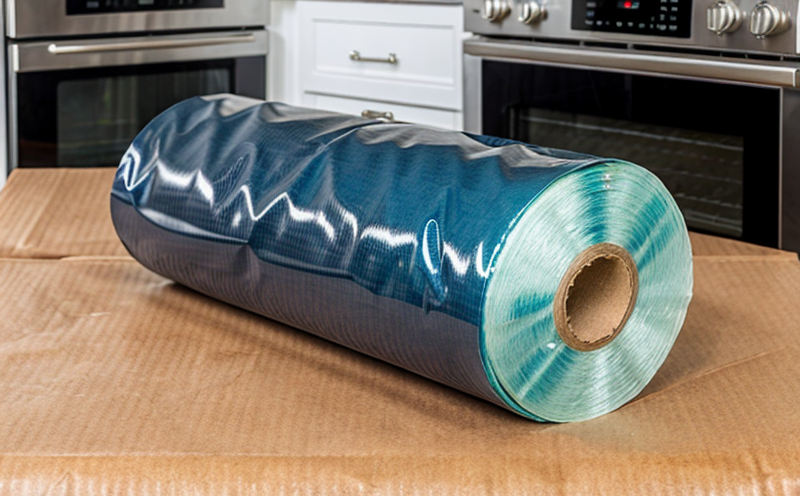DIN 50017 Climate Aging Testing of Household Plastic Covers
The DIN 50017 standard specifies methods for determining the resistance of materials to climatic aging. This includes exposure tests under natural and artificial conditions, as well as laboratory-based accelerated aging processes. For household plastic covers, this testing ensures that the products maintain their integrity, appearance, and functionality over time, even in harsh environmental conditions.
Household plastic covers are critical components used in protecting various items such as electronics, books, and other valuable possessions from dust, moisture, and physical damage. Ensuring these covers withstand climate aging is essential for consumer safety, product longevity, and brand reputation. The DIN 50017 test simulates real-world conditions that the material might encounter during its lifecycle, providing a robust assessment of its durability.
The testing process involves exposing plastic specimens to specific environmental factors such as temperature, humidity, and light exposure, which can degrade polymer materials over time. The standard provides detailed protocols for both laboratory-based and outdoor aging tests. Laboratory tests are particularly useful for accelerated aging processes, enabling manufacturers to predict the long-term performance of their products under controlled conditions.
During testing, specimens are typically conditioned in a climate chamber where temperature, relative humidity, and light exposure can be precisely controlled. The test duration is often extended beyond normal usage periods to simulate real-world aging over several years or decades. This helps manufacturers understand the potential lifespan of their products and identify any weaknesses that need improvement.
The DIN 50017 standard also includes specific acceptance criteria for evaluating the performance of plastic materials after exposure. These criteria focus on changes in physical properties, appearance, color stability, and resistance to cracking or degradation. By adhering to these standards, manufacturers can ensure their products meet high-quality expectations.
Accurate specimen preparation is crucial for reliable test results. This includes selecting appropriate samples that represent the final product, conditioning them according to specified humidity levels, and ensuring they are free from defects before testing begins. Proper sample preparation ensures consistent and repeatable test results.
The testing process typically involves monitoring changes in key physical properties over time. These may include tensile strength, impact resistance, elongation at break, color fastness, and gloss retention. Regular measurements throughout the aging period allow for early detection of material degradation, enabling timely corrective actions if necessary.
Post-test evaluation is conducted using a range of analytical techniques to assess changes in the physical properties and appearance of the plastic samples. These may include tensile testing machines, colorimeters, gloss meters, and microscopy. The data collected from these evaluations provides valuable insights into the performance characteristics of the material under different aging conditions.
By following DIN 50017 standards, manufacturers can ensure their household plastic covers meet stringent quality requirements. This not only enhances consumer trust but also supports sustainable product design practices by identifying potential issues early in the development process. The test results provide critical information for continuous improvement and innovation within the industry.
The DIN 50017 standard is widely recognized internationally, making it a valuable tool for companies operating globally. Compliance with this standard demonstrates commitment to quality and helps build a positive reputation among customers, partners, and regulatory bodies.
Why Choose This Test
- Precision in Environmental Simulation: The test closely replicates the real-world conditions that household plastic covers will encounter over their lifetime. This ensures accurate predictions of long-term performance.
- Comprehensive Evaluation: DIN 50017 provides a holistic approach to assessing various aspects of plastic material integrity, including physical properties and appearance changes.
- Accelerated Aging: The standard allows for accelerated aging processes in the laboratory, enabling faster evaluation of long-term performance without extended wait times.
- International Recognition: Compliance with DIN 50017 is widely accepted globally, providing a universal benchmark for quality assurance and product longevity.
The test results are highly valued by manufacturers who aim to produce durable, reliable products. It offers a robust framework for assessing the aging resistance of plastic materials used in household covers, ensuring they meet stringent international standards.
Customer Impact and Satisfaction
- Better Quality Products: By subjecting their products to DIN 50017 climate aging tests, manufacturers can identify potential weaknesses early in the development process, leading to higher-quality end products.
- Increased Customer Trust: Ensuring compliance with international standards enhances customer confidence and satisfaction. It demonstrates a commitment to delivering reliable products that meet high-quality expectations.
- Competitive Advantage: Adhering to DIN 50017 can differentiate a company's offerings in the market, providing a competitive edge by offering superior product performance and durability.
- Sustainability: The test supports sustainable practices by identifying potential issues early, allowing for improvements that enhance both product longevity and environmental impact.
The results of DIN 50017 testing can lead to enhanced customer satisfaction and loyalty. Customers appreciate products that have been rigorously tested and proven to withstand harsh environmental conditions over extended periods. This not only boosts brand reputation but also fosters long-term relationships between manufacturers and their customers.
International Acceptance and Recognition
The DIN 50017 standard is recognized globally for its comprehensive approach to evaluating the aging resistance of materials in household plastic covers. This international acceptance ensures that products conforming to this standard are well-received across different markets.
Many countries have adopted or referenced DIN 50017 as part of their national standards, further emphasizing its significance and reliability. Compliance with these internationally recognized standards is crucial for companies exporting goods worldwide, ensuring they meet the quality expectations of various regulatory bodies and customers.
The standard's widespread use also facilitates easier compliance with local regulations in different countries, reducing the need for additional testing or certification processes. This global recognition enhances a company’s ability to expand its market reach while maintaining consistent product quality standards.





